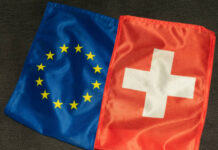Markets
After a slow start in Europe, core yields gradually resumed last week’s bottoming/rebounding pattern. One swallow doesn’t make a summer, but a big beat in the Empire Manufacturing survey (10.8 from -24.6 vs -18 expected with strong details) suggested that recent weakness in the production sector might be abating and rubberstamped the intraday rise in yields. The NAHB housing index also continued a cautious bottoming process (albeit at a low level, 45 from 44). In the end US yields gained between 9.5 bps (2-y) and 6.6 bps (10-y). The rise was almost solely due to a higher real yield. From a technical point of view, both the US 2-y and 10-y yield broke above the top of a (tentative) ST downtrend, improving the technical picture. However, next key resistance is looming respectively at 4.25% for the 2-y (currently 4.19%) and 3.65% for the 10-y yield (currently 3.59%). A further rise in US yields will mainly have to come from a further pricing out of Fed rate cuts. This might be a tough and slow process. A 25 bps rate hike for May or June is fully discounted. German yields lagged the US move, changing from -0.2 bps (2-y) to + 4.4 bps (30-y). US equities opened in red, but gradually found their composure (S&P +0.33%). Some first results from smaller US banks for now didn’t bring any really discomforting news. The (real) interest rate advantage facilitated the USD comeback. DXY extended its rebound off the 100.80 support area (touched on Friday) to close at 102.1. Still, the downtrend since early March isn’t broken yet. EUR/USD also corrected further south to close at 1.0926. Also in this cross rate the technical picture hasn’t change in a profound way.
This morning, the focus is on (better than expected) China Q1 GDP data (cfr. Infra). However, it doesn’t help a clear directional market reaction in Asian trading. Asian equities mostly trade with modest losses, Japan being the exception to the rule (yen softness). The dollar struggles to extend its rebound (DXY 102.02, EUR/USD 1.0935). US yields are easing marginally. The eco calendar today only contains ‘second tier’ data (ZEW survey, US housing starts and permits). This suggests more order driven trading and probably makes its difficult to break key technical levels on the interest rate markets (cfr. supra) or in the dollar. We stay cautious on a sustained USD comeback.
UK labour data published this morning printed strong. Employment in the 3 months to February was strong (3M/3M change 169k). Wage growth also surpassed the consensus (weekly earnings ex-bonus 6.6% vs 6.2% expected). At the same time, the unemployment rate ticked up from 3.7% to 3.8%. Sterling had a good intra-day run yesterday and tries to extend gains post data, with EUR/GBP currently trading near 0.8825. Tomorrow’s CPI will be key for markets to make up their mind on the BoE early May policy decision.
News and views
The Chinese economy grew by a more than expected 2.2% q/q in Q1 as it emerged from painful lockdowns. GDP is now 4.5% larger than in the same quarter last year. Growth is expected to accelerate in Q2 but to a large extent because of the low comparative base as China re-imposed a strict zero-Covid policy until end December. Details were mixed. Retail sales rebounded as pent-up demand was released, growing 5.8% in the first quarter with a 10.6% surge y/y in March alone. Exports also surged but could come under pressure amid weakening global demand. Industrial production rose 3% Y/Y in Q1, less than the 3.5% expected while investments (5.1% YtD Y/Y) also undershoot the 5.7% analyst consensus. The latter even came solely on the account of state-owned investments (10%). Private investments remained weak at 0.6%, highlighting company cautiousness. Property investment continued to decline. The Chinese yuan reacts stoic to the release, holding near USD/CNY 6.87. Chinese stocks lose some ground.
Turkey’s central bank (CBRT) last week asked local lenders to limit the amount of dollar purchases made in the interbank market, Bloomberg reported on Monday, citing people with knowledge of the matter. The CBRT assigned a daily cap on how much FX they should buy after meeting the needs created through exits from the KKM program – a government incentive to convert dollars to liras by compensating participants for swings in the exchange rate. The limit is yet another measure to prevent the lira from excessively weakening against the likes of the USD and euro with real (policy) rates in Turkey being extremely negative. The Turkish lira is setting record lows each day. USD/TRY is changing hands near 19.39. Volatility in the currency is searing as the May 14 presidential elections near.












